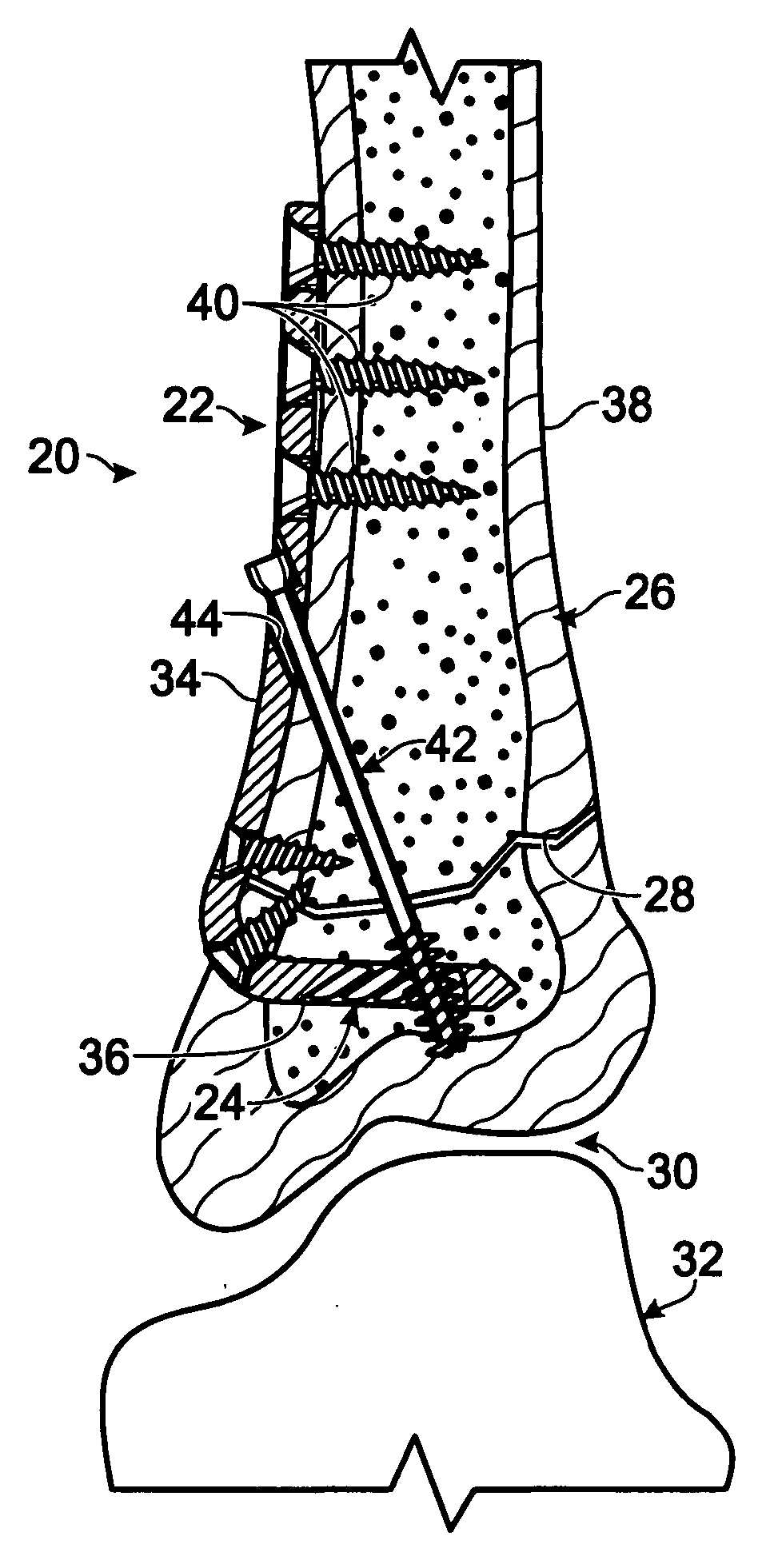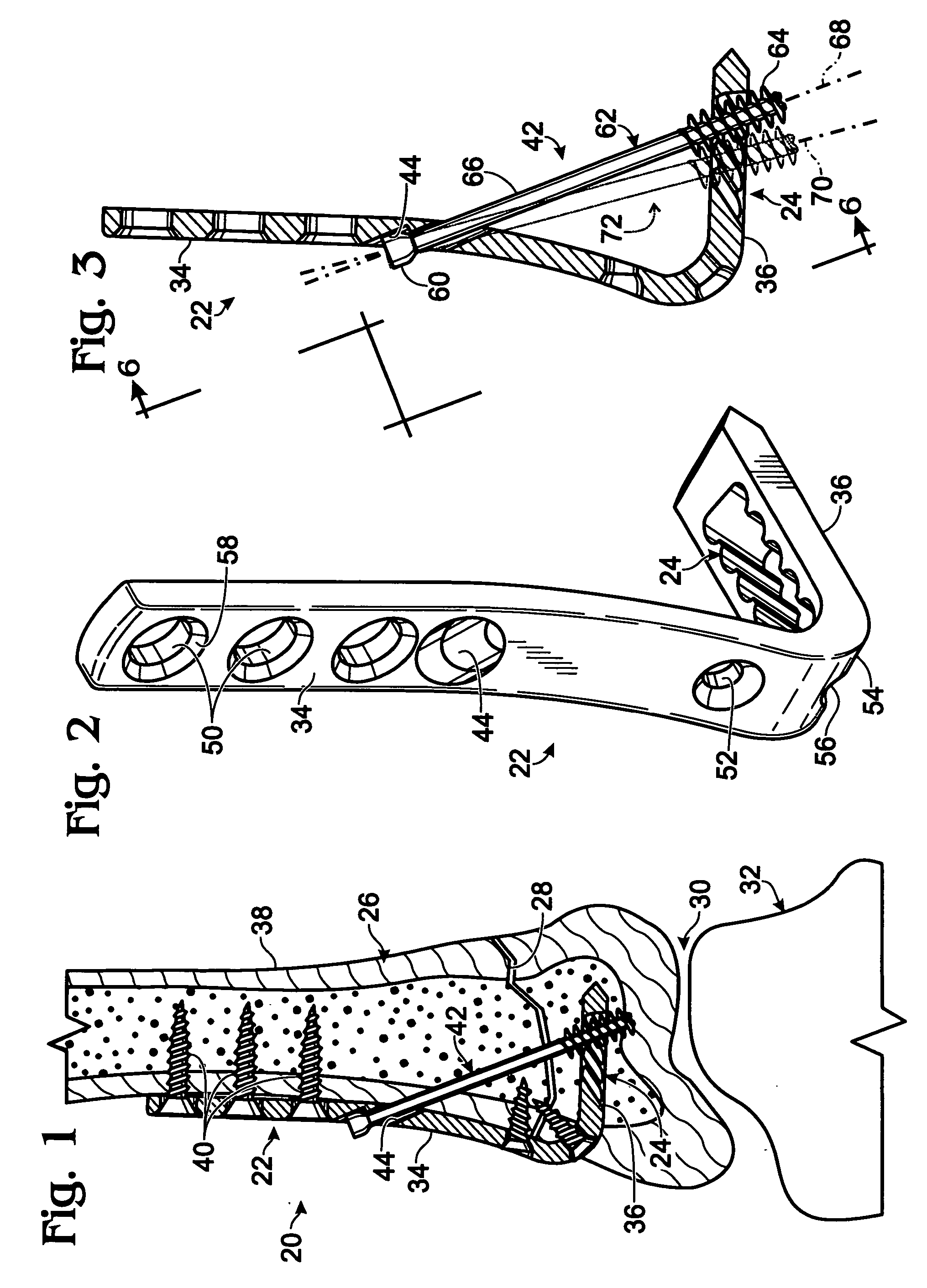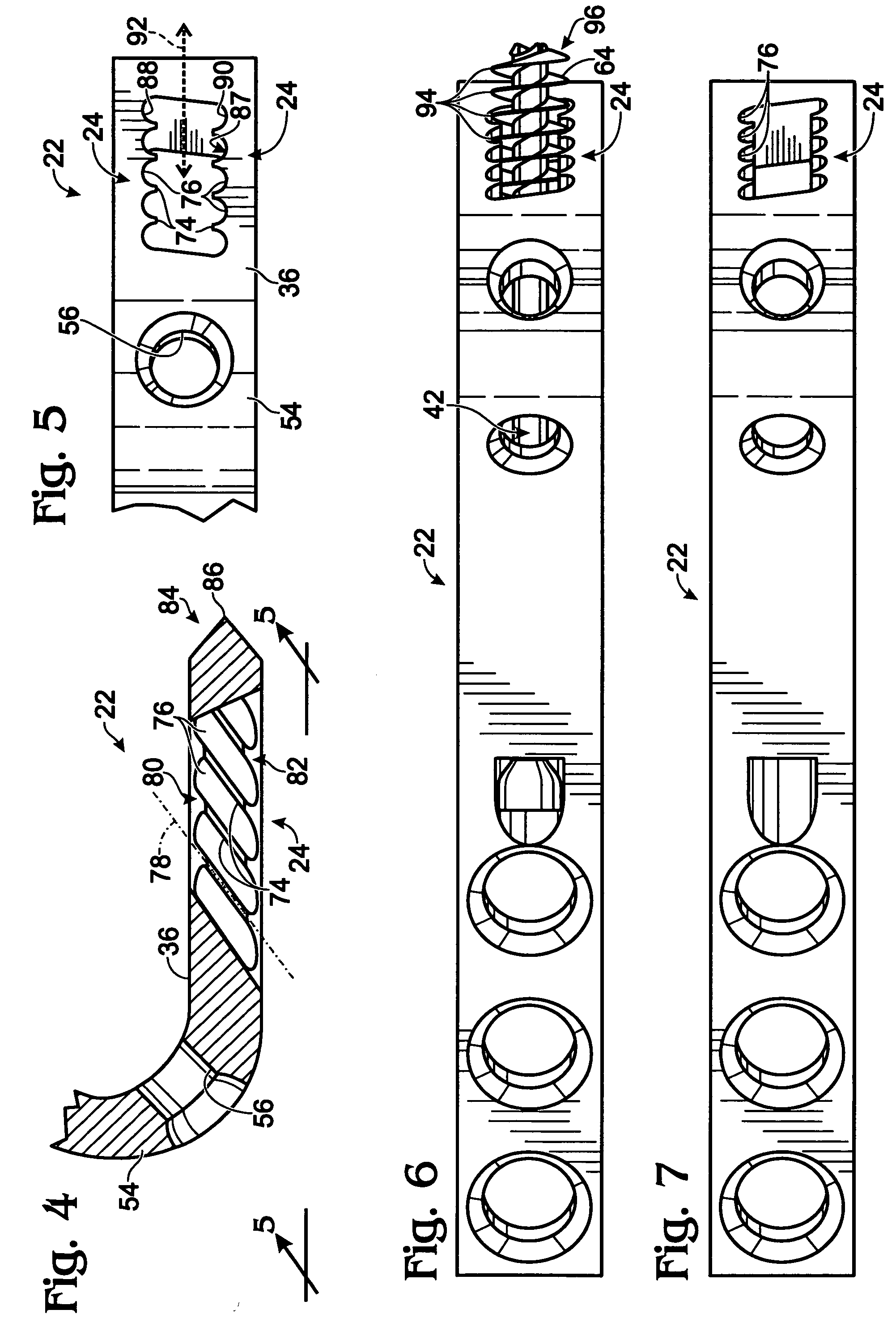Bone plate with toothed aperture
a bone plate and aperture technology, applied in bone drill guides, medical science, surgery, etc., can solve the problems of affecting the fixation of bone fractures (or other discontinuities), and reducing the quality of bone plate, so as to reduce the density and/or quality of bone pla
- Summary
- Abstract
- Description
- Claims
- Application Information
AI Technical Summary
Benefits of technology
Problems solved by technology
Method used
Image
Examples
example 1
Exemplary Bone Plate with a Toothed Aperture
[0062] This example describes an exemplary bone plate including a toothed aperture, in accordance with aspects of the present teachings; see FIGS. 2-7.
[0063]FIG. 2 shows bone plate 22 in the absence of fasteners and bone; bone plate 22 may be used as a blade plate. Various features of this bone plate, such as toothed aperture 24, external portion 34, internal portion 36, and opening 44 were introduced above in relation to FIG. 1.
[0064] External and internal portions 34, 36 may include a plurality of openings. For example, the external portion may include a first set of one or more openings 50, a second set of one or more openings 52, and an oblique opening 44 disposed between the first and second sets. The internal portion 36 may include toothed aperture 24 and one or more additional openings. A bridge portion 54 may include one or more bridge openings 56 disposed generally at the junction between the external and internal plate portion...
example 2
Exemplary System for Guiding a Fastener to a Toothed Aperture
[0075] This example describes an exemplary system for defining a guide axis that extends through a toothed aperture; see FIG. 8.
[0076]FIG. 8 shows a system 100 for drilling and fastener placement. The system includes another exemplary bone plate 102 with a toothed aperture 104. The bone plate include a threaded opening 106 configured to threadably receive a cannulated drill guide 108. The drill guide, when engaged with the bone plate in threaded opening 106, may define an axis 110 along which a fastener may threadably engage the toothed aperture. Accordingly, a drill 112 may be guided along the drill guide to form a hole centered about guide axis 110. After hole formation in bone, a bone screw or other suitable fastener then may be placed into the threaded aperture and rotatably engaged with toothed aperture 104. The bone screw may be guided to the toothed aperture while the drill guide is still engaged with the plate an...
example 3
Exemplary Bone Plate with Increased Intra-Plate Coupling
[0078] This example describes an exemplary bone plate with a locking aperture targeted by a plurality of plate openings; see FIG. 9.
[0079]FIG. 9 shows another exemplary bone plate 122 with a toothed aperture 124. Bone plate 122 is configured so that a plurality of threaded fasteners 126, 128 may be received in a plurality of oblique openings 130, 132 and extend to toothed aperture 124 for threaded engagement therein. The fasteners may extend to the toothed aperture along parallel (or nonparallel) axes 134, 136.
PUM
 Login to View More
Login to View More Abstract
Description
Claims
Application Information
 Login to View More
Login to View More - R&D
- Intellectual Property
- Life Sciences
- Materials
- Tech Scout
- Unparalleled Data Quality
- Higher Quality Content
- 60% Fewer Hallucinations
Browse by: Latest US Patents, China's latest patents, Technical Efficacy Thesaurus, Application Domain, Technology Topic, Popular Technical Reports.
© 2025 PatSnap. All rights reserved.Legal|Privacy policy|Modern Slavery Act Transparency Statement|Sitemap|About US| Contact US: help@patsnap.com



